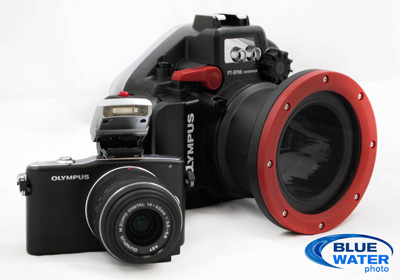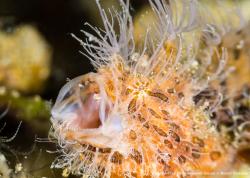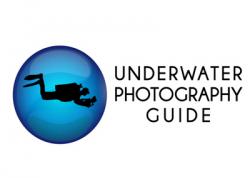Underwater Housings
Your first purchase after getting a camera body and lens, will be an underwater camera housing, aka underwater housing.
Housings can be made out of Polycarbonate (Fantasea, Ikelite, some Sea & Sea housings), Aluminum (the more expensive housings like Subal, Nexus, Nauticam, Aquatica, Sea & Sea), or a combination of the two (some Canon Sea & Sea housings). Scroll to the bottom of this article for links to specs and reviews of popular cameras and underwater housings.
Underwater housing manufacturers
Here is some thoughts about the various housing manufacturers. Most of these housings are quite good quality, and you may want to discuss with your UW photography store which housing is best for you. Please note that some housings have limited support for ports & repairs, depending on where you live.
Ikelite housings – the most popular housing brand out there. Several models are made from 1 mold, so they are not as compact. Loads of loyal customers, and some critics. Great bargain, especially since older models contained a TTL converter. Having a TTL converter included in all of the housings is a big advantage. Their newer models boast an even lower price, with the TTL converter being optional.
Some have criticized their older port-locking design as being easier to flood than other designs. As of Nov 2009, they have improved their port locks. In 2016 Ikelite did a complete redesign and unveiled their "dry-lock" system, which is a big improvement - and they are now considered as reliable, if not more so, than other brands.
Sea & Sea housings - solid mid-range choice, with a great housing for the Nikon D850, Nikon D7, EOS R, although prices have been creeping up. New versions for lower-end dSLRs like the Canon T6i are polycarbonate, and allow the strobe to fire via fiber optics, called the RDX series for the nikon D40/D60. The aluminum MDX series housings support fiber optics and optional TTL converters.Sea & Sea has done a great job keeping their underwater housings smalller compared to other manufacturers.
Aquatica housings - solid mid-range choice, known for listening to customer feedback, use by both recreational and tech divers, and deep depth ratings. They offer a good range of aluminum DSLR and mirrorless housings.
Nauticam housings - they started out as new company in Hong Kong with a mid-range aluminum Nikon D90 & D700 underwater housing, with more models on the way including the D300s. Here's the Nauticam D90 housing review. Now, Nauticam is considered the leader in underwater housings after pioneering several innovations, such as their patented port-lock system. They support a wider range of cameras and lenses than other manufacturers, including many high end cinema cameras, and are widely considered to have some of the best housings on the market.
Marelux housings - Marelux is the newest underwater housing manufacturer on the block. They produce high-quality housings made from an aluminum alloy with a durable anodized coating, meaning they can withstand even the harshest conditions. Read more about why we love Marelux underwater housings.
Isotta housings - Isotta is based in Italy. Their housings, made of aluminum, are smaller than other brands, and at a better price point - making them increasingly popular around the world. Their distinctive red color has earned them the nickname the "Ferrari of the Sea".
Fantasea housings - they no longer make dSLR housings, but they still make polycarbonate housings for popular compact camera and Sony mirrorless cameras like the A6400 and A6500. They just added a vacuum system to their Sony mirrorless housings, and came out with a flash trigger.
Light and Motion - All camera & strobe controls are controlled electronically. Users swear by them, although eventually electronics may fail. As of now, Light & motion no longer makes housings, as they focus on lighting.
Olympus - They make polycarbonate housings for their camera models
Fisheye (FIX) – Japanese company, makes a housing for the Canon G10 and G11. Sister company of Seatool.
10bar – Hong kong company, makes a few budget compact & dSLR housings, including a decent one for the Lumix LX3.
Kraken - maker of smart phone housings, with optional wet wide-angle lenses
Seatool – known for their video housings, they produce camera housings for a few models. Some housings allow you to use the popup flash.
Hugyfot – Belgian company. Solid aluminum housings, mid to high end choice. Housings for a wide range of dSLR cameras.
Patima – Korean company, same as Epoque. Prices in the low to mid-range area. Housings are made of aluminum and stainless steel. Supports the Canon compacts and a few dSLRs.
Subal - High end choice, Austrian made. All glass ports. Users talk about the great ergonomics. Housings for the Canon 500d, Nikon D90, and Canon 7d were announced by Subal in late 2009.
Seacam - Considered a higher end choice, with all glass ports. Used by many professionals. Seacam announced a Canon 5d Mark II housing and a Nikon D300s housing at the end of 2009. Based in Austria.
Sealux - German company, all glass ports, makes well-built aluminum housings for many dSLR models.
Watershot - based in San Diego, USA - they have a machined aluminum underwater housing for the Canon 500D and Canon 5D mark II.
Zillion - based in Japan, can be difficult to get outside of Japan
Nexus - based in Japan, mid to high range housings. Good reputation, and their D90 housing has received good reviews due to fiber optic support. Read our overview of Nexus underwater housings.
Epoque - based in Japan, they have less expensive housings for the Canon digital rebel series, and compete with Ikelite. Some of their latest housings support fiber optics.
Ewa-Marine - these are like expensive, thick zip-lock bags. People use them for snorkeling, surfing, kayaking, etc. but I haven't heard of anyone using them for underwater photography on scuba. But that doesn't mean there aren't people who have used them in very shallow water.
Some of these higher-end, compact housings can be very heavy underwater with a macro lens. Be prepared to add lots of extra buoyancy to your setup.
When you decide to upgrade your camera, you will most likely need to get a new housing. When deciding how much to spend on a housing, keep in mind that many UW housings have a significantly lower resale value than when first purchased.
Important Features in dSLR underwater housings
The following features may or may not be important to do. If they are, you should discuss them with your underwater camera shop.
Access to all controls
Most underwater housings have controls for the important buttons. Some controls may or may not be important to you, for example I always use the C/S/M lever, but rarely use the focus lock button. Other people have opposite preferences. Make sure your housing supports the controls you use.
Depth Rating
If you are a technical / deep diver (past 40 meters), you'll want to check the depth rating on your housing.
Support for fiber optic connection
Some people are starting to prefer fiber optic connections for their underwater strobes. Some housings from Nexus, Seatool and S&S are starting to support this, and there may be others. Check on your particular model.
Material used
Aluminum and polycarbonate are the most popuar, with aluminum usually being more durable but more expensive.
Size
Smaller is usually preferred, but larger housings can be more neutrally buoyant.
Underwater buoyancy
Some of these housings can be quite negatively buoyant underwater, especially the smaller aluminum housings, check with some of your friends who have similar housings. The people selling you the housing might stretch the truth on this one a little. Larger size "Buoyancy arms" are starting to become popular.
Type of port mounting
Some manufacturers have reputations for better solutions than others, regarding how their ports mount. For example, Sea & Sea has a great port locking mechanism, and owners rarely have problems with their port/housing connection. Ikelite ports "snap on" in a way that some feel can be improved. Ask around to find out the reputation of the housing you are looking at.
Support for Glass dome ports
If you want a glass dome port, which can cost much more, make sure your housing manufacturer supports it. For example. Ikelite does not, while Seacam also sells glass ports.
Underwater Housing Ports
Although compact camera housings usually have a built-in port, mirrorless and dSLR housings do not include a port. The port you need will vary depending on the kind of lens you use.
Cost of ports & zoom rings
When looking at the price of a housing, don't forget to include the additional cost of ports, extensions, focus rings, port covers, and zoom rings - it can add up.
Support for different size ports and rings
Smaller underwater housing manufacturers might not support all the lenses you want to use. Check to see how many ports they have, whether they support small and large dome ports, and what size extension rings.
Viewfinder options
If you are interested in an external viewfinder, which will help you see your subject better and/or easier through the viewfinder, check to see what your options are, and check the price, they can be expensive.
Support for large lenses
Some lenses like the new Canon 16-35mm II or Canon 11-24mm can be very wide, make sure your housing supports them, not all do.
Leak alarms
Some housings have built in leak alarms, I know for a fact this has saved several cameras. Some housings, like Ikelite, are clear, and you may not need a leak alarm because you can see inside the housing if water droplets appear.
Ergonomics of the aperture / shutter speed dials and shutter release
Some housings vary vastly in how easy it is to adjust the aperture, shutter speed, and release the shutter. Ideally, you should be able to operate the housing with one hand. Really the only way to determine this is to try out the housing. In some housings, the ergonomics are so bad I would never use the housing.
Compact camera underwater housings
Housings from Canon, Fuji and Olympus are often known as "OEM" housings - Original Equipment manufacturers. Other companies (third parties) also make underwater camera housings.
Canon housings - Canon housings for g7X Mark II/g9/g10 are good deals. One downside is that there is no hot shoe for a sync cord connection to the strobes.
Fuji housings – These are very well built. They have a dual o-ring system
Ikelite housings – Sturdy, they used to be a little bulky but their compact camera housings are now much smaller. Considered "higher end" than OEM housings for compact cameras.
Patima housings – recently getting more popular, high quality aluminum housing
Olympus housings - considered quite good housings for a camera manufacturer
Recsea housings - considered one of the best housings for Canon and Sony compact cameras.. These are "high end" housings, that allow port changes for wide-angle.
Nikon Underwater Housings
Nikon cameras are the most popular cameras for serious underwater photography, particular their mirrorless and dSLR models. Nikon compact cameras generally do not have features that make them attractive for underwater use.
Popular cameras including the Nikon Z6, Z7 and the Nikon D850 - with Nauticam, Isotta, Ikelite, and Sea & Sea housings being the most recommended for Nikon users.
Underwater housing and camera reviews:
Sony A1 Underwater Camera Review
Sony A7C Underwater Camera Review
Canon EOS R5 Underwater Camera Review
Canon EOS R5 Underwater Housings
Canon EOS R6 Underwater Camera Review
Sony A7S III Underwater Camera Review
Nikon Z 7II Underwater Camera Review
Sony A7R IV Underwater Camera Review
Sea & Sea EOS R Underwater Housing Review
Ikelite Z6 and Z7 Underwater Housing Review
Canon SL3 and Ikelite Underwater Housing Review
Nauticam Sony A7R III Underwater Housing Mini Review
Nauticam D850 Underwater Housing Review
Fantasea FA6500 Housing Review
Aquatica A6500 Housing Announcement
Sea & Sea 5D Mark IV Underwater Housing Preview
Subal Underwater Housing for Olympus EM1 Mark II
Aquatica Nikon D5 Housing Overview
Aquatica Canon 5D Mark IV Housing Overview
Nauticam Canon 5D Mark IV Housing
Fantasea Canon G7XII Housing Review
Aquatica Canon 1DX MK II Housing Preview
Ikelite Housing for Nikon D500
Sea & Sea MDX-D500 Underwater Housing
Further Reading
Best lenses for underwater photography
Understanding dome ports and flat ports
Additional Reviews Below

RECOMMENDED ARTICLES
SUPPORT THE UNDERWATER PHOTOGRAPHY GUIDE:
The Best Service & Prices on u/w Photo Gear
 Visit Bluewater Photo & Video for all your underwater photography and video gear. Click, or call the team at (310) 633-5052 for expert advice!
Visit Bluewater Photo & Video for all your underwater photography and video gear. Click, or call the team at (310) 633-5052 for expert advice!
The Best Pricing, Service & Expert Advice to Book your Dive Trips
 Bluewater Travel is your full-service scuba travel agency. Let our expert advisers plan and book your next dive vacation. Run by divers, for divers.
Bluewater Travel is your full-service scuba travel agency. Let our expert advisers plan and book your next dive vacation. Run by divers, for divers.





























